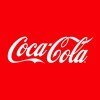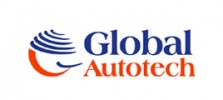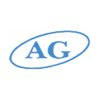Filter interviews by
Kasyap Sweetners Interview Questions and Answers
6 Interview questions
Cooling tower is a heat rejection device that removes waste heat from the water-cooled system.
Water is circulated through the tower and sprayed over the fill material.
Air is drawn through the tower by the fan, which cools the water by evaporation.
The cooled water is then returned to the system.
The tower can be of different types such as natural draft, mechanical draft, crossflow, counterflow, etc.
Autoclave is a device used for sterilization by subjecting objects to high-pressure steam.
Autoclaves are commonly used in medical and laboratory settings.
They work by using high-pressure steam to kill bacteria, viruses, and other microorganisms.
Autoclaves can sterilize a variety of materials, including surgical instruments, glassware, and textiles.
The sterilization process typically takes around 15-20 minutes.
Auto...
A reactor is a vessel or device used for chemical reactions, nuclear reactions, or power generation.
Reactors are used in various industries such as chemical, pharmaceutical, and nuclear.
Chemical reactors are used to produce chemicals by mixing reactants together.
Nuclear reactors are used to generate electricity by harnessing the energy released from nuclear reactions.
Reactor design depends on the type of reaction,...
ION Exchange is a process of removing ions from a solution and replacing them with other ions of similar charge.
It is commonly used in water treatment to remove impurities.
It is also used in the production of pharmaceuticals and electronics.
The process involves passing the solution through a resin bed that contains exchangeable ions.
The resin can be regenerated by washing it with a solution of the desired ions.
A saccharification reactor is used in the production of biofuels and converts starch into sugars.
It is a vessel where starch is mixed with enzymes to break down the starch into simple sugars.
The simple sugars are then fermented to produce ethanol or other biofuels.
The reactor is typically operated at high temperatures and pressures to optimize the saccharification process.
Examples of enzymes used in the process in...
Cation is a positively charged ion, Anion is a negatively charged ion, and Mixbed is a combination of cation and anion exchange resins.
Cation is an ion with a positive charge, such as Na+ or Ca2+.
Anion is an ion with a negative charge, such as Cl- or SO42-.
Mixbed is a combination of cation and anion exchange resins used to produce high-purity water.
Cation exchange resins remove positively charged ions, while anion...
Kasyap Sweetners Interview Experiences
1 interview found
I applied via Walk-in and was interviewed in Apr 2021. There were 4 interview rounds.
Interview Questionnaire
7 Questions
- Q1. * Tell me about yourself
- Ans.
I am a dedicated Production Engineer with a strong background in optimizing manufacturing processes and improving efficiency.
Educational Background: I hold a degree in Mechanical Engineering, which provided me with a solid foundation in engineering principles.
Experience in Process Optimization: In my previous role, I led a project that reduced production downtime by 15% through the implementation of lean manufacturing ...
- Q2. What is ION Exchange?
- Ans.
ION Exchange is a process of removing ions from a solution and replacing them with other ions of similar charge.
It is commonly used in water treatment to remove impurities.
It is also used in the production of pharmaceuticals and electronics.
The process involves passing the solution through a resin bed that contains exchangeable ions.
The resin can be regenerated by washing it with a solution of the desired ions.
- Q3. What is reactor?
- Ans.
A reactor is a vessel or device used for chemical reactions, nuclear reactions, or power generation.
Reactors are used in various industries such as chemical, pharmaceutical, and nuclear.
Chemical reactors are used to produce chemicals by mixing reactants together.
Nuclear reactors are used to generate electricity by harnessing the energy released from nuclear reactions.
Reactor design depends on the type of reaction, reac...
- Q4. What do you know about Autoclave and how did they work?
- Q5. Working process of cooling tower?
- Ans.
Cooling tower is a heat rejection device that removes waste heat from the water-cooled system.
Water is circulated through the tower and sprayed over the fill material.
Air is drawn through the tower by the fan, which cools the water by evaporation.
The cooled water is then returned to the system.
The tower can be of different types such as natural draft, mechanical draft, crossflow, counterflow, etc.
- Q6. Describe cation, Anion and Mixbed
- Ans.
Cation is a positively charged ion, Anion is a negatively charged ion, and Mixbed is a combination of cation and anion exchange resins.
Cation is an ion with a positive charge, such as Na+ or Ca2+.
Anion is an ion with a negative charge, such as Cl- or SO42-.
Mixbed is a combination of cation and anion exchange resins used to produce high-purity water.
Cation exchange resins remove positively charged ions, while anion exch...
- Q7. What do you mean by Saccharification reactor?
- Ans.
A saccharification reactor is used in the production of biofuels and converts starch into sugars.
It is a vessel where starch is mixed with enzymes to break down the starch into simple sugars.
The simple sugars are then fermented to produce ethanol or other biofuels.
The reactor is typically operated at high temperatures and pressures to optimize the saccharification process.
Examples of enzymes used in the process include...
Interview Preparation Tips
Like reactor and their types ..
Basic process like
Working of evaporator
ION exchange cooling tower
Filter press ..etc.
Top trending discussions






Interview questions from similar companies

I appeared for an interview before Mar 2024, where I was asked the following questions.
- Q1. Why do you want to work here
- Ans.
I admire your company's innovative approach and commitment to excellence, which aligns with my career goals and values.
Your company's focus on cutting-edge technology resonates with my passion for innovation, as seen in my previous project on AI-driven solutions.
I appreciate your commitment to professional development, which aligns with my desire to continuously learn and grow in my engineering career.
The collaborative...
- Q2. What are your future plans
- Ans.
I aim to enhance my technical skills, lead innovative projects, and contribute to team growth while pursuing continuous learning.
Pursue advanced certifications in cloud computing to stay updated with industry trends.
Lead a cross-functional team to develop a new product feature that improves user experience.
Mentor junior engineers to foster a collaborative and growth-oriented team environment.
Engage in open-source proje...

I applied via Naukri.com and was interviewed in Nov 2021. There was 1 interview round.
Interview Questionnaire
2 Questions
- Q1. About previous companies.
- Q2. About my self
Interview Preparation Tips
Positive attitude.

I applied via Walk-in and was interviewed in Mar 2022. There were 3 interview rounds.

Like arthematic questions and marketing questions
(4 Questions)
- Q1. Tell us about your self?
- Q2. What are your strengths and weakness
- Q3. Why we should hire you?
- Q4. At what position did u see yourself after 5 years
Interview Preparation Tips

Senior Associate Interview Questions & Answers
Coca-Cola Companyposted on 30 Aug 2022
I applied via Company Website and was interviewed in Mar 2022. There was 1 interview round.
(3 Questions)
- Q1. Skills test u do in online itself
- Q2. In interview do bex with Massage Test
- Q3. 46 steps in Primsincling Massage of BFS Spa
- Ans.
Primsincling Massage of BFS Spa involves 46 steps for a complete massage experience.
The massage starts with a warm-up session to relax the muscles.
The therapist then applies pressure on specific points to release tension.
Different techniques like kneading, tapping, and stroking are used for a full-body massage.
The massage ends with a cool-down session to calm the body and mind.
The therapist may also use aromatherapy oi...
Interview Preparation Tips
And do bex with Interview panel.
Interview Panel females do bex with interviewee.
After bex do Oil Massage.
Before doing bex keep offer letter in table.
U have to do 46 steps of Massage Primsincling Massage of BFS Spa, Kolkata

I applied via Company Website and was interviewed in Aug 2022. There were 4 interview rounds.

Aptitude is the best part of salesman.
Group discussion is improve of sales of company.
(1 Question)
- Q1. Do you know sale in the market.
Interview Preparation Tips
- No courses ar suggest for interv

(2 Questions)
- Q1. Process of Team Building
- Ans.
Team building is the process of creating a strong and cohesive team by fostering collaboration, communication, and trust among team members.
Encourage open communication and active listening among team members
Promote team bonding activities and events to build relationships
Set clear goals and expectations for the team to work towards
Provide opportunities for team members to collaborate on projects and tasks
Recognize and...
- Q2. Sales Techniques
Interview Preparation Tips

Senior Engineer Interview Questions & Answers
ZF Steering Gearposted on 5 Apr 2025
I appeared for an interview before Apr 2024, where I was asked the following questions.
- Q1. Basics of c cpp
- Q2. Embedded c and microcontroller

I appeared for an interview before Apr 2024, where I was asked the following questions.
- Q1. What are your key achievements
- Q2. Whenever you feel that your peers and colleagues not supporting you or other department not answering you.But anyhow you have to complete your task in this situation how to deal with the situation.

I applied via Recruitment Consulltant and was interviewed in Aug 2023. There were 2 interview rounds.
(1 Question)
- Q1. Process knowledge on Electroplating Process from start to end
(1 Question)
- Q1. Salary discussion
Interview Preparation Tips
Kasyap Sweetners Interview FAQs
Tell us how to improve this page.
Interview Questions for Popular Designations
- Associate Interview Questions
- Software Engineer Interview Questions
- Software Developer Interview Questions
- Business Analyst Interview Questions
- Senior Associate Interview Questions
- Senior Engineer Interview Questions
- Graduate Engineer Trainee (Get) Interview Questions
- Java Developer Interview Questions
- Show more
Interview Questions from Similar Companies
Kasyap Sweetners Reviews and Ratings
based on 17 reviews
Rating in categories
|
Store Manager
6
salaries
| ₹4.5 L/yr - ₹7.5 L/yr |
|
Production Supervisor
6
salaries
| ₹2.5 L/yr - ₹5 L/yr |
|
Executive Accountant
6
salaries
| ₹3 L/yr - ₹6 L/yr |
|
Production Manager
4
salaries
| ₹11.9 L/yr - ₹18 L/yr |
|
System Administrator
4
salaries
| ₹2.4 L/yr - ₹8 L/yr |

ZF Steering Gear

Coca-Cola Company

Dhoot Transmission

Amphenol Interconnect
- Home >
- Interviews >
- Kasyap Sweetners Interview Questions









